Why Glute Activation is Essential for a Healthy Body
- Updated - March 16, 2025
The glutes, also known as the “butt muscles,” are the largest and most powerful muscle group in the body. Proper glute activation is critical for performance, injury prevention, and maintaining a healthy posture. In this article, we’ll explore the importance of glute activation, common causes of weak glutes, and the best exercises to ensure they’re firing correctly.
What Are the Gluteal Muscles?
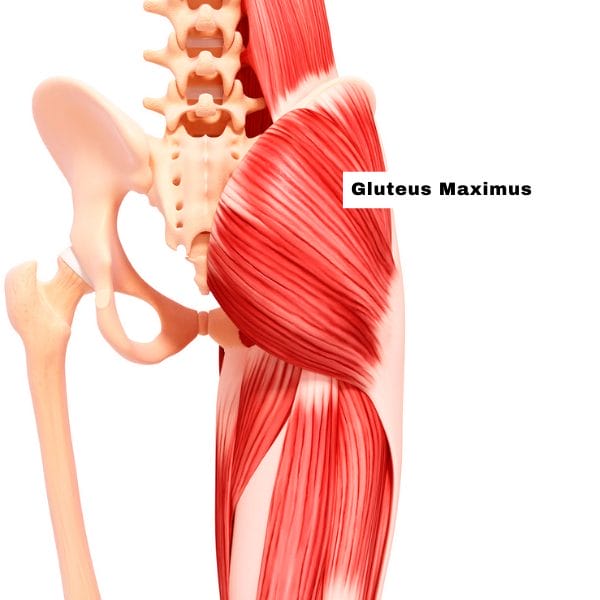
The gluteal muscles are a group of three powerful muscles located in the buttocks. Together, they play a vital role in supporting posture, stabilizing the pelvis, and enabling movement in the lower body. Let’s take a closer look at each of these muscles:
Gluteus Maximus
The Gluteus Maximus is the largest and most superficial gluteal muscle, forming the bulk of the buttocks. It is primarily responsible for generating power and stability during movements like running, jumping, and climbing stairs.
- Origin: The gluteus maximus originates from several structures, including:
- The posterior aspect of the ilium (the large, fan-shaped pelvic bone).
- The dorsal surface of the sacrum (the triangular bone at the base of the spine).
- The coccyx (the tailbone).
- The thoracolumbar fascia (a connective tissue sheath in the lower back).
- Insertion: Its fibers insert into:
- The iliotibial tract (a band of connective tissue running down the side of the thigh).
- The gluteal tuberosity of the femur (a bony ridge on the back of the thigh bone).
- Functions:
- Hip extension (e.g., rising from a chair or sprinting).
- External (outward) rotation of the thigh.
- Assists in the abduction and lateral stability of the thigh during dynamic movements.
- Provides force during activities that require explosive power, such as jumping or lifting heavy objects.
Gluteus Medius (Glute Medius)
The Gluteus Medius is a broad, fan-shaped muscle. It is a critical stabilizer of the pelvis and is essential for maintaining balance during single-leg activities.
- Origin: The gluteus medius arises from the external surface of the ilium, just below the iliac crest.
- Insertion: It attaches to the greater trochanter of the femur, a bony prominence on the outer side of the thigh bone.
- Functions:
- Hip abduction (moving the leg away from the body’s midline).
- Stabilizing the pelvis during walking or running, particularly in the stance phase of gait (when one foot is on the ground).
- Prevents the hip from dropping on the unsupported side, a phenomenon seen in Trendelenburg gait (caused by weak glute medius muscles).
- Assists in internal (inward) rotation of the thigh.
Gluteus Minimus
The Gluteus Minimus is the smallest and deepest of the three gluteal muscles. Though less prominent than its counterparts, it plays a vital role in stabilizing the hip and supporting movement.
- Origin: The gluteus minimus originates from the external surface of the ilium, just below the gluteus medius.
- Insertion: Like the gluteus medius, it attaches to the greater trochanter of the femur.
- Functions:
- Hip abduction and internal rotation.
- Works synergistically with the gluteus medius to stabilize the pelvis during dynamic movements.
- Supports postural control during activities like walking, running, and balancing on one leg.
Biomechanical Importance of the Gluteal Muscles
The gluteal muscles collectively act as the powerhouse of the lower body, contributing to both dynamic and static movements:
- They provide pelvic stability, prevent lateral tilts, and maintain proper alignment during movement.
- They facilitate force transfer between the upper and lower body, enabling efficient biomechanics during activities such as jumping, sprinting, and lifting.
- They counteract the effects of gravity by maintaining the upright position of the pelvis and spine, supporting posture and balance.
Common Dysfunction of the Gluteal Muscles
Weakness or dysfunction in the gluteal muscles can lead to several issues:
- Lower Back Pain: Caused by compensatory overuse of the lumbar spine muscles when the glutes fail to activate.
- Hip and Knee Pain: Resulting from poor alignment and inadequate stabilization during movement.
- Gait Abnormalities: Including a waddling gait or excessive pelvic drop, often associated with weak gluteus medius and minimus muscles.
Understanding the anatomy and function of the gluteal muscles underscores why glute activation is essential for overall health, performance, and injury prevention. Strengthening these muscles ensures proper alignment, enhances athletic performance, and supports a healthy, pain-free lifestyle.
Functions of the Gluteal Muscles
The gluteal muscles are essential in various movements and maintaining overall body stability. Let’s break down their key functions and their importance in daily activities and athletic performance:
Hip Extension
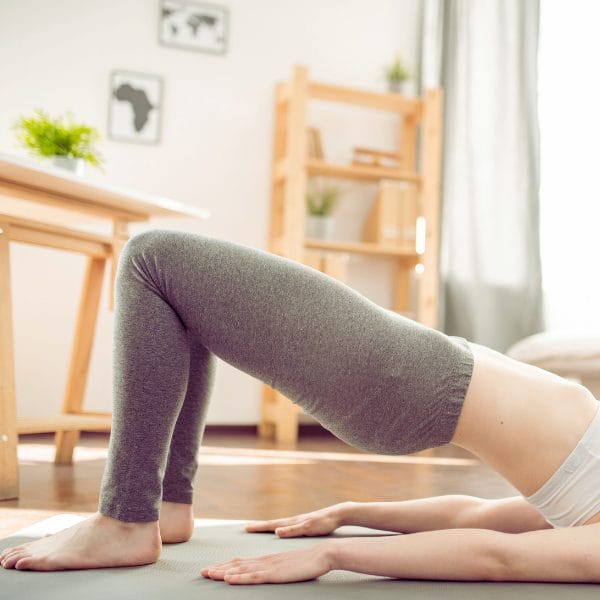
The glutes, particularly the gluteus maximus, are the primary muscles responsible for hip extension, which occurs when the thigh moves backward relative to the pelvis. This movement is crucial for:
- Walking and Running: Hip extension provides the power needed to propel the body forward during the push-off phase of gait.
- Jumping: The glutes generate explosive force for upward or forward jumps, making them essential for sports like basketball, volleyball, and track and field.
- Climbing Stairs: The glutes lift the body upward against gravity, reducing strain on the knees and lower back.
- Lifting Movements: Exercises like deadlifts and kettlebell swings heavily rely on strong and active glutes to extend the hips and stabilize the spine.
Hip Stabilization
The gluteus medius and gluteus minimus are critical stabilizers of the hip joint. Their role in stabilization includes:
- Single-Leg Balance: These muscles keep the pelvis level when standing on one leg, such as walking or running.
- Preventing Hip Collapse: During weight-bearing activities, the glutes prevent the knee and hip from collapsing inward (valgus collapse), which can lead to injuries such as runner’s knee or ACL tears.
- Maintaining Alignment: By stabilizing the hip, the glutes ensure proper alignment of the femur, pelvis, and spine, reducing strain on other joints.
Postural Support
The glutes are integral to maintaining an upright and balanced posture. Their contributions to postural support include:
- Counteracting Gravity: The gluteus maximus keeps the pelvis aligned with the spine, preventing excessive forward tilting (anterior pelvic tilt) caused by tight hip flexors or weak glutes.
- Spinal Stability: Strong glutes support the lumbar spine, reducing the likelihood of lower back pain.
- Preventing Forward Head Posture: By promoting proper pelvic alignment, the glutes indirectly support a neutral spine position, which helps avoid compensatory posture issues like forward head posture.
Pelvic Alignment
The glutes play a pivotal role in maintaining proper pelvic alignment, critical for reducing strain on the lower back, hips, and knees.
- Pelvic Tilt Control: Weak glutes can lead to an anterior pelvic tilt, placing additional pressure on the lumbar spine and contributing to lower back pain.
- Load Distribution: By keeping the pelvis stable, the glutes ensure that forces generated during movement are evenly distributed across the lower body, reducing wear and tear on the knees and hips.
- Core Integration: The glutes work with the abdominal and lower back muscles to stabilize the pelvis during dynamic activities like running, squatting, and lifting.
- In Everyday Activities: Strong glutes are essential for walking, climbing stairs, standing from a seated position, and maintaining balance while carrying heavy loads.
- In Athletic Performance: Whether sprinting, jumping or performing explosive movements, the glutes provide the power and stability required for peak performance.
- In Injury Prevention: Proper hip stabilization and pelvic alignment reduce the risk of overuse injuries in the lower back, knees, and ankles.
By understanding the functional importance of the glutes, it’s clear that activating and strengthening these muscles can profoundly impact overall movement efficiency, posture, and physical well-being. Let me know if you’d like more details or additional expansion on any aspect!
Discover a practitioner near you.
Looking for a practitioner near you? Our extensive network of qualified professionals is here to help you.
What Is Glute Activation and Why Is It Important?
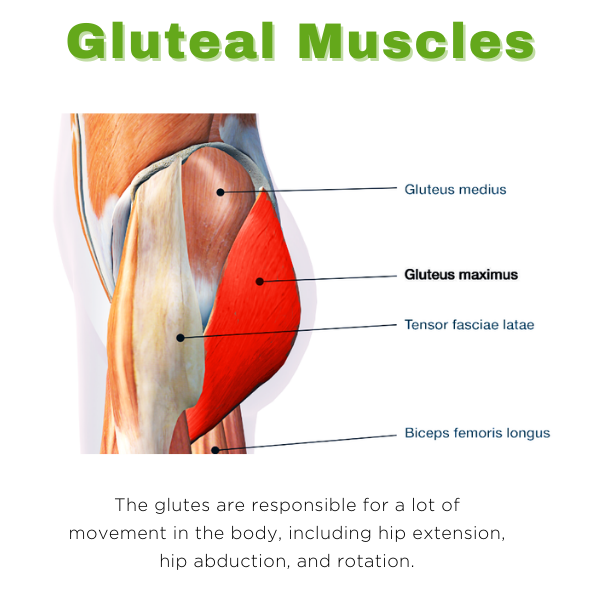
Glute activation refers to the process of “waking up” the glute muscles so they can function effectively during movement and exercise. Due to our modern lifestyles, many people experience “gluteal amnesia,” where prolonged sitting, poor posture, or inactivity causes the glutes to weaken or fail to engage adequately. When this happens, muscles like the lower back, hamstrings, or quads compensate, leading to imbalances, reduced performance, and a higher risk of injury.
Why Is Glute Activation Essential?
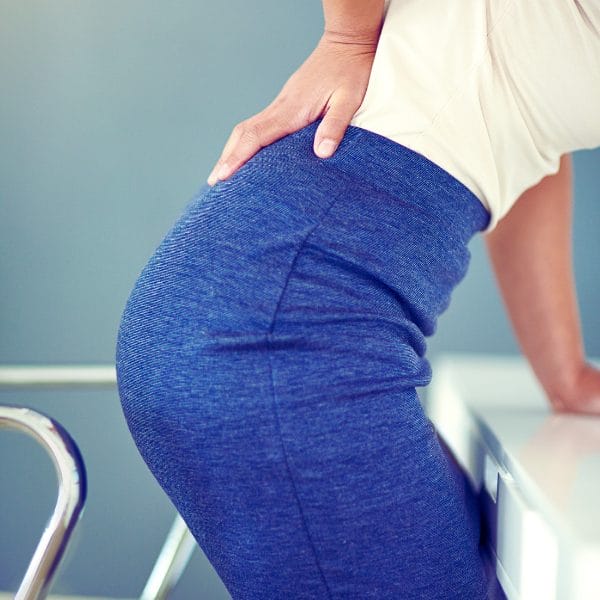
There are several key reasons why activating the glutes should be a priority for anyone focused on improving movement, posture, or athletic performance:
Preventing Injuries
Weak or inactive glutes disrupt natural movement patterns, which forces other muscles and joints to compensate. This extra strain often leads to injuries such as:
- Lower Back Pain: Over-reliance on the lumbar spine muscles to perform movements that should engage the glutes.
- Runner’s Knee: Caused by poor alignment due to weak hip stabilizers.
- IT Band Syndrome: Resulting from inadequate glute strength to stabilize the pelvis during running or walking.
Activating the glutes ensures that forces generated during movement are distributed evenly, protecting the lower back, knees, and hips from unnecessary stress.
Enhancing Athletic Performance
As one of the most powerful muscle groups in the body, the glutes are responsible for driving force, speed, and stability in physical activities. Proper glute activation can improve performance in:
- Running and Sprinting: The glutes provide power for propulsion and extend the hip with each stride.
- Jumping and Lifting: Activated glutes generate explosive force when jumping for height or performing heavy lifts like deadlifts and squats.
- Dynamic Sports: Activities like soccer, basketball, and tennis rely heavily on strong, stable glutes for quick lateral movements and bursts of speed.
Improving Posture
Inactive glutes create imbalances in the posterior chain (glutes, hamstrings, and lower back), often leading to poor posture. This can result in:
- Anterior Pelvic Tilt: Weak glutes fail to support the pelvis, causing it to tilt forward and strain the lower back.
- Spinal Misalignment: Poor pelvic positioning often causes compensatory posture issues, such as rounded shoulders or forward head posture.
- Activating the glutes supports a neutral pelvis and spine, improving overall posture and reducing strain on the body.
Reducing Pain
Chronic pain in the lower back, hips, or knees is often linked to weak or inactive glutes. When the glutes fail to do their job, smaller muscles take over, leading to fatigue and discomfort. Activating the glutes helps to:
- Offload excessive strain on the lower back.
- Stabilize the hips to prevent overuse injuries.
- Maintain proper alignment in the knees during movement.
Promoting Efficient Movement
Strong, active glutes improve how energy is transferred throughout the body. When the glutes are activated:
- Movement Becomes Smoother: The glutes coordinate with other muscles to create fluid, powerful motion.
- Stability Improves: They stabilize the pelvis and hips, ensuring balance and preventing wobbly or inefficient movement patterns.
- Energy is Conserved: Proper engagement reduces the workload on smaller, less efficient muscles, allowing you to move with less effort.
Why Are Glutes Often "Inactive"?
Modern lifestyles contribute significantly to poor glute activation. The main culprits include:
- Prolonged Sitting: Spending hours sitting at a desk or in a car deactivates the glutes and tightens the hip flexors, making it harder for the glutes to engage when needed.
- Inactivity: When glutes are not regularly used, they weaken over time.
- Poor Movement Patterns: Incorrect form during exercises can prevent proper glute engagement, reinforcing compensatory habits.
Signs and Causes of Weak Glutes
How Can You Tell If Your Glutes Are Weak?
Recognizing weak glutes is crucial for improving your body’s strength, posture, and efficiency. Weak glutes can manifest in several ways, affecting daily activities, athletic performance, and even posture. Below are some common signs that your glutes may need more attention:
Difficulty with Lower Body Exercises:
Struggling to perform basic movements like squats, lunges, or bridges is a strong indicator of weak glutes. These exercises heavily rely on glute strength, and without proper engagement, other muscles like the quads or lower back may overcompensate, leading to inefficient movement patterns.
Lower Back, Hip, or Knee Pain:
Weak glutes shift the workload to surrounding areas, including the lumbar spine, hip joints, and knees. Over time, this compensatory behavior can cause pain, discomfort, or even chronic issues like:
- Lower Back Strain: When the glutes fail to stabilize the pelvis, the lower back muscles are forced to take on more work.
- Hip Pain: Weak glutes reduce the stability of the hip joint, increasing the risk of joint wear and tear.
- Knee Pain: Poor alignment and lack of stabilization from the glutes can lead to conditions like patellar tracking disorder or runner’s knee.
Poor Posture:
Glutes play a vital role in maintaining pelvic alignment and supporting the spine. Weak glutes can result in postural issues such as:
- Anterior Pelvic Tilt: Caused by tight hip flexors pulling the pelvis forward due to weak glutes.
- Forward Head Posture and Rounded Shoulders: Secondary effects from poor pelvic alignment can cascade into the upper body, causing a slouched posture.
Inefficient Movement Patterns:
Weak glutes lead to inefficient energy transfer during walking, running, or jumping. You might notice:
- A lack of power or explosiveness in your movements.
- A tendency to waddle or shift weight unevenly during walking or running.
What Causes Weak Glutes?
Several factors contribute to weak or underactive glutes. Many of these are tied to modern lifestyle habits or poor movement mechanics. Here are the most common causes:
Prolonged Sitting (Gluteal Amnesia):
Sitting for extended periods is one of the leading causes of weak glutes. When you sit, your hip flexors remain in a shortened position while the glutes stay inactive. Over time, this can lead to:
- Tight Hip Flexors: Preventing the glutes from fully engaging.
- Deactivation of Gluteal Muscles: “gluteal amnesia” refers to the muscles essentially “forgetting” how to activate appropriately after being inactive for long periods.
Why It Matters: Prolonged sitting is especially problematic for office workers, drivers, and anyone who spends much of their day seated. Addressing this issue requires not only exercise but also incorporating more movement into your daily routine.
Inactivity and Sedentary Lifestyles:
The saying “use it or lose it” applies perfectly to muscle health, including the glutes. If you don’t regularly engage your glutes through exercise or movement, they weaken over time. This disuse atrophy leads to the following:
- Loss of strength and power.
- A decline in muscle tone and endurance.
Why It Matters: An inactive lifestyle doesn’t just weaken the glutes, it also contributes to systemic imbalances in the posterior chain, affecting the hamstrings, lower back, and hips.
Improper Form During Exercise:
Performing exercises with poor form can prevent the glutes from properly engaging, leaving other muscles to do the work instead. For example:
- Squats: If your knees cave inward (valgus collapse) or you shift the weight forward to your quads, your glutes aren’t activated effectively.
- Bridges or Hip Thrusts: Failing to squeeze your glutes at the top of the movement reduces activation.
- Deadlifts: Allowing your lower back to take over rather than focusing on driving through the hips and glutes can limit engagement.
Why It Matters: Improper technique reduces the effectiveness of your workouts and reinforces poor movement patterns, leading to potential injuries.
Muscle Imbalances:
Sometimes, stronger muscles, such as the quads or hamstrings, dominate movements that should primarily involve the glutes. This is especially common in:
- Athletes who focus heavily on forward-motion sports (e.g., running, cycling) without balancing their training.
- Fitness Enthusiasts who neglect posterior chain exercises in favor of more quad-dominant movements like leg presses.
Why It Matters: Muscle imbalances can further weaken the glutes and increase the risk of injuries, particularly in the knees and lower back.
Postural Dysfunction:
Poor posture, such as excessive anterior pelvic tilt, creates a mechanical disadvantage for the glutes. In this position:
- The glutes are stretched and weakened, making it harder for them to activate.
- Tight hip flexors pull the pelvis forward, further inhibiting glute function.
How Do Weak Glutes Impact Overall Health?
When the glutes are weak or inactive, the effects ripple throughout the body, impacting movement, posture, and overall health. Here’s a summary of what can happen:
- Increased Injury Risk: Weak glutes lead to compensatory movement patterns that strain other joints and muscles.
- Postural Problems: Poor pelvic alignment caused by weak glutes affects the spine, shoulders, and neck.
- Reduced Performance: Whether running, lifting, or simply walking up stairs, weak glutes reduce power, efficiency, and endurance.
- Chronic Pain: Weak glutes often result in lower back, hip, or knee pain due to the lack of stabilization and alignment.
What Can You Do About Weak Glutes?
If you recognize these signs or causes, don’t worry, glute strength can be rebuilt with targeted exercises and consistent practice.
Addressing weak glutes and incorporating activation exercises into your routine can prevent injuries, improve posture, and enhance overall movement efficiency. The glutes are the foundation of a healthy body – start strengthening them today!
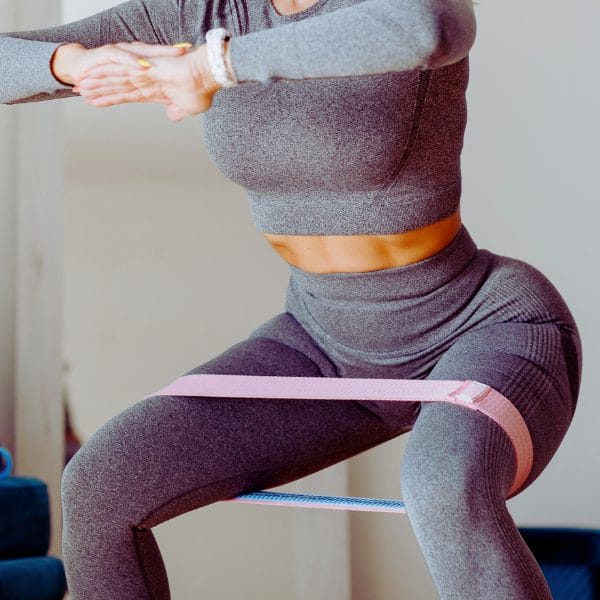
Top Glute Activation Exercises
Glute Bridge (double or single leg glute bridge)
- How to Perform: Lie on your back, bend your knees, and lift your hips while squeezing your glutes.
- Benefits: Improves hip extension and isolates the glutes.
Hip thrust
- How to Perform: Place your back against a bench, feet flat on the floor, and thrust your hips upward.
- Benefits: Builds glute strength and power.
Resistance Band lateral walks
- How to Perform: Place a band around your ankles, keep your feet hip-width apart, and step sideways.
- Benefits: Strengthens the glute medius and stabilizers.
Clamshells
- How to Perform: Lie on your side, keep your knees bent, and raise your top knee while keeping your feet together.
- Benefits: Targets the gluteus medius and improves hip stability.
Lunge
- How to Perform: Step forward, lower your body and push back up through your heel.
- Benefits: Engages glutes and builds functional strength.
Squats
- How to Perform: Lower your body by bending your knees and pushing your hips back, then drive through your heels to stand.
- Benefits: Activates glutes, quads, and core.
FAQ's
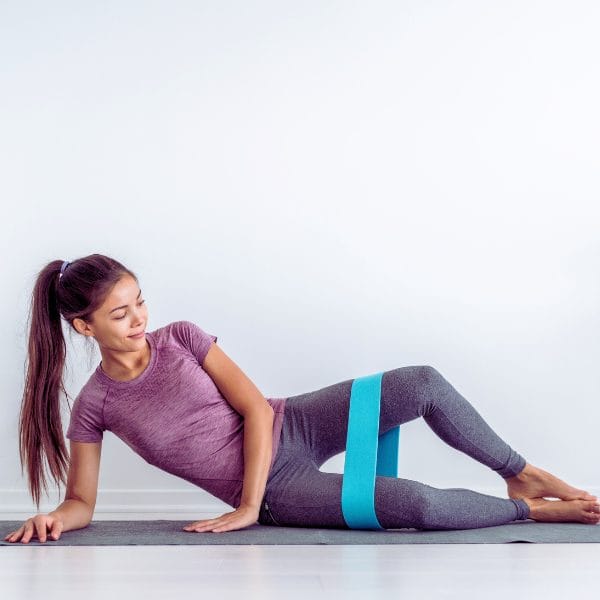
Can I Use Resistance Bands for Glute Activation?
Absolutely! Resistance bands are one of the most effective tools for glute activation. They add external resistance to your exercises, ensuring better muscle engagement and isolating the glutes more effectively. For instance:
- Clamshells with a Band: Adding a band around your knees increases resistance, forcing your glutes (especially the gluteus medius) to work harder to open the knees.
- Lateral Band Walks: Placing a band around your ankles or just above the knees enhances stabilization and works the gluteus medius and minimus.
- Glute Bridges with a Band: Looping the band around your thighs keeps the knees aligned and ensures proper activation of all three gluteal muscles.
Pro Tip: Use light to moderate resistance bands when starting, gradually increasing the resistance as your glutes strengthen. Incorporate bands into warm-ups or workouts for added intensity.
How Often Should I Do Glute Activation Exercises?
The frequency of glute activation exercises depends on your fitness level and goals:
- Beginners: Start with 2-3 sessions per week, focusing on form and consistency. For example, you could perform a short routine before lower-body workouts or on rest days to improve activation.
- Intermediate to Advanced: Incorporate glute activation exercises daily or before every workout. This ensures the glutes are properly “awake” and ready to support heavy lifts or dynamic movements.
Why Frequency Matters: Glute activation is not about overloading the muscles but ensuring they are primed and engaged. For athletes or those recovering from injury, more frequent sessions reinforce proper movement patterns.
What Are Common Mistakes in Glute Activation?
When it comes to activating the glutes, small mistakes can undermine your efforts. Here are some of the most common pitfalls to avoid:
Using Improper Form:
If your form is off, other muscles like the quads, hamstrings, or lower back may take over. For example:
- During bridges, failing to drive through your heels can shift the effort away from the glutes.
- Allowing the knees to cave inward during lateral band walks reduces glute engagement.
Neglecting Glute Squeezing at the Top of Movements:
You must consciously squeeze the glutes at the top of exercises like bridges, squats, or hip thrusts to fully engage the glutes. Skipping this step minimizes activation and reduces the exercise’s effectiveness.
Inconsistent Practice:
Glute activation requires repetition and consistency. Sporadic sessions won’t rewire your neuromuscular patterns or build the strength needed for lasting improvement.
Using Too Much or Too Little Resistance:
- Too Little Resistance: This limits muscle engagement and prevents adequate stimulation.
- Too Much Resistance: Overloading can cause improper form and strain other muscles, increasing the risk of injury.
Pro Tip: Focus on controlled, intentional movements. Master proper form before increasing resistance or intensity.
What are some tips for activating the glutes?
Here are a few tips for activating the glutes:
1. Make sure you use the proper form when performing exercises.
2. Make sure to engage the glutes when doing other activities, such as: running, walking, and jumping.
3. Do a combination of both specific exercises and engagement during other activities.
4. Be consistent with your training, and make sure to give your glutes time to rest and recover.
Why Are Glutes Important for Runners?
The glutes are a runner’s powerhouse, providing strength, stability, and efficiency in every stride. Here’s how they play a pivotal role:
Power Generation:
The glutes are the primary muscles responsible for hip extension, which drives each step forward. Strong, active glutes allow runners to generate more power, increasing speed and endurance.
Pelvic Stability:
The gluteus medius and minimus stabilize the pelvis during the stance phase of running (when one foot is on the ground). Weak glutes can cause the pelvis to tilt or drop, leading to inefficient movement and a higher risk of injuries like IT band syndrome.
Impact Absorption:
The glutes help absorb the shock of impact during running, reducing strain on the knees, hips, and lower back. When the glutes are weak or inactive, the impact forces are transferred to other areas, increasing the likelihood of pain or injury.
Improved Biomechanics:
Proper glute engagement aligns the hips, knees, and ankles, promoting smooth and efficient running mechanics. This reduces energy waste and enhances performance.
Pro Tip for Runners: Incorporate glute activation drills like lateral band walks, single-leg bridges, and step-ups into your warm-up routine to improve running efficiency and reduce injury risk.
Additional FAQs
What If I Don't Feel My Glutes During Exercises?
If you struggle to feel your glutes working, you might need to focus on your mind-muscle connection. Try these tips:
- Visualize the glutes contracting during each rep.
- Start with isometric holds, like holding the top position of a glute bridge or clamshell for 5-10 seconds.
- Use light resistance bands to create tension and isolate the glutes more effectively.
Can Glute Activation Help With Lower Back Pain?
Yes! Weak or inactive glutes often force the lower back to compensate during movements, leading to strain and pain. By strengthening and activating the glutes, you reduce the load on the lower back and improve overall posture and alignment.
The bottom line
Strong, active glutes are the foundation of a healthy, functional body. They support proper posture, stabilize the pelvis and spine, and provide the power and efficiency needed for everyday movements and high-intensity athletic performance. Yet, weak or inactive glutes can quietly undermine your body’s mechanics, leading to pain, poor posture, and even injuries.
By incorporating glute activation exercises into your routine, you can “wake up” these crucial muscles, improve movement efficiency, and prevent compensatory strain on other body parts. Whether new to exercise or a seasoned athlete, consistent practice and proper form are key to reaping the benefits of strong, engaged glutes.
The journey to healthier, stronger glutes starts with small, intentional steps. Use the strategies and exercises in this blog post to activate and strengthen your glutes, and you’ll unlock better performance, improved posture, and reduced pain. Your body will thank you for it, one glute bridge at a time.
Resources
Articles:
Gluteus Maximus Activation During Strength Exercises
- A systematic review published in the Journal of Sports Science and Medicine examined gluteus maximus (GMax) activation levels during various strength exercises incorporating hip extension and external load. The study concluded that exercises such as step-ups, deadlifts, hip thrusts, lunges, and squats induce very high levels of GMax activation, making them effective for strengthening the glutes.
PLEASE NOTE
PostureGeek.com does not provide medical advice. This information is for educational purposes only and is not intended to be a substitute for professional medical attention. The information provided should not replace the advice and expertise of an accredited health care provider. Any inquiry into your care and any potential impact on your health and wellbeing should be directed to your health care provider. All information is for educational purposes only and is not intended to be a substitute for professional medical care or treatment.
About the author
Find Expert Posture Practitioner Near You
Discover our Posture Focused Practitioner Directory, tailored to connect you with local experts committed to Improving Balance, Reducing Pain, and Enhancing Mobility.
